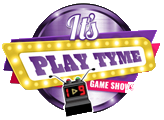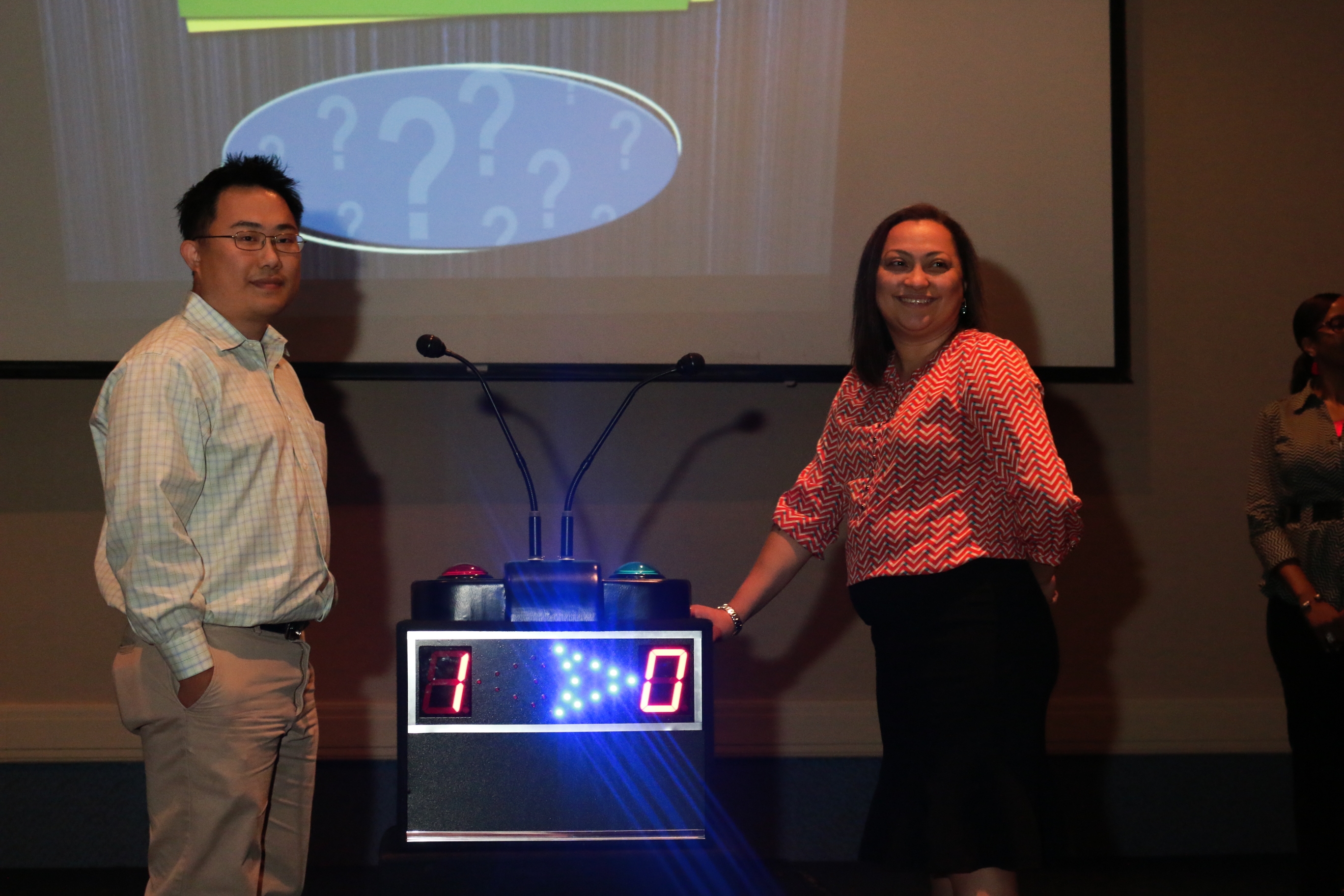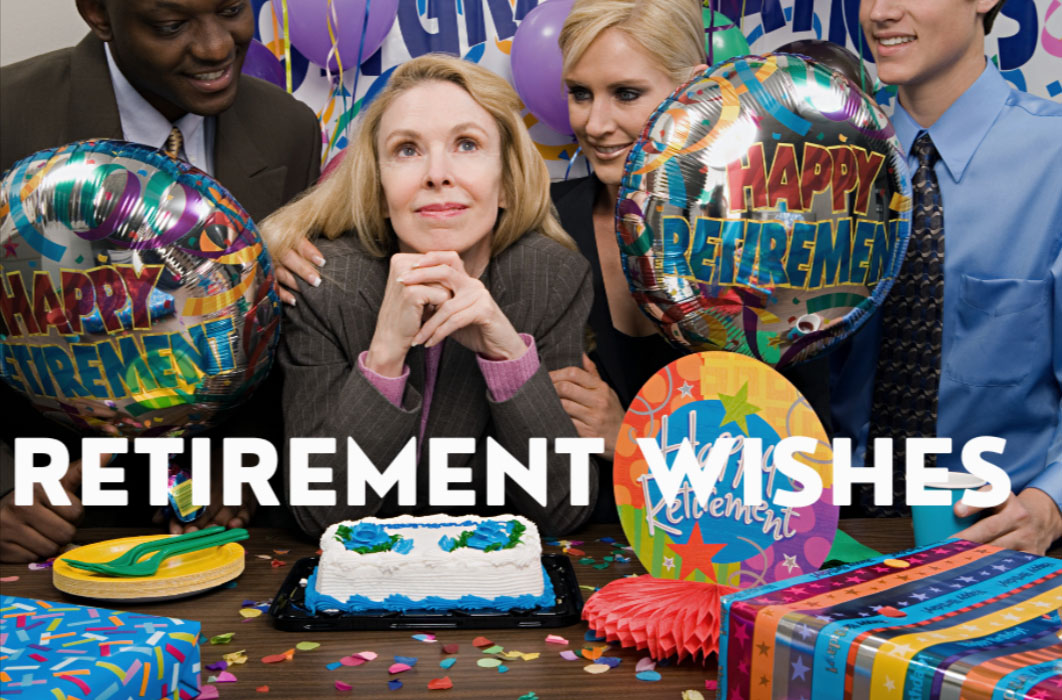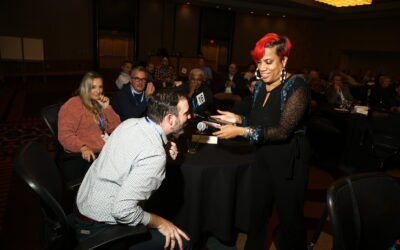Did you know that 85% of leaders report improved team communication after participating in interactive game shows during retreats?
These activities aren’t just for fun, they’re a powerful way to enhance leadership skills, foster collaboration, and create lasting connections among your team.
Integrating game shows into your retreat offers a unique opportunity to blend work and play. Activities like the “Marshmallow Tower” or “Puzzle Race” encourage problem-solving and strategic thinking while keeping the atmosphere light and engaging.
Companies like Google and REI have successfully used these methods to strengthen their leadership teams and drive organizational success.
In this article, you’ll discover actionable ideas to design a retreat that balances productivity and enjoyment. From planning tips to proven strategies, these insights will help you create an event that leaves your team energized and inspired.
Key Insights – Off-site Leadership Retreats
- Game shows improve communication and collaboration among team members.
- Activities like “Marshmallow Tower” encourage problem-solving and creativity.
- Real-world examples from companies like Google show the effectiveness of these methods.
- Balancing work and fun creates a seamless retreat experience.
- Actionable planning tips ensure your event is both productive and enjoyable.
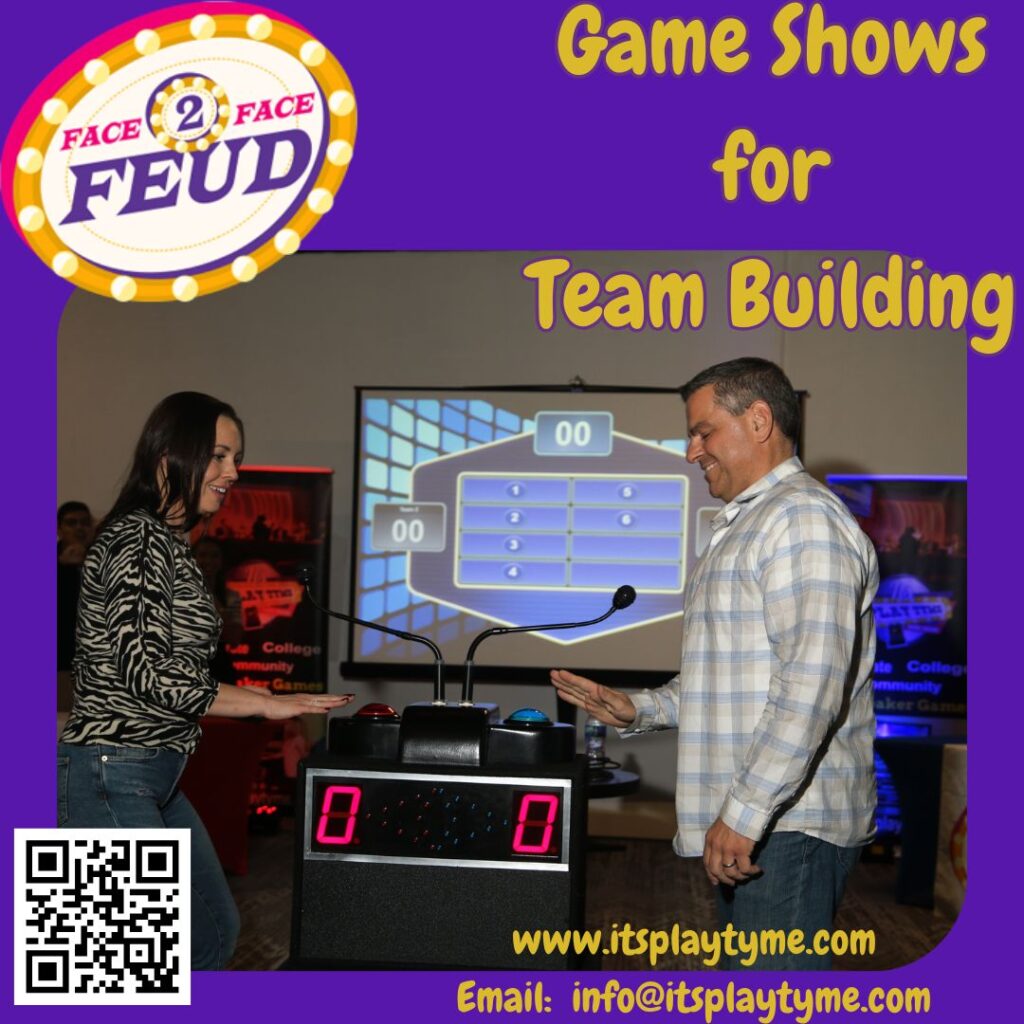
Game Shows for Team Building
Overview: Transforming Leadership Retreats with Game Shows
Interactive game shows are reshaping how teams connect and grow during retreats. These activities are not just about entertainment, they’re a powerful way to foster collaboration, improve communication, and build stronger bonds among participants.
When you integrate game shows into your retreat, you create an environment where everyone feels included. This approach breaks down hierarchical barriers, allowing team members to share ideas freely and work together more effectively.
Benefits of Interactive Activities
Interactive activities like game shows offer numerous benefits. They encourage problem-solving, creative thinking, and strategic planning.
Participants often find themselves more engaged and motivated, leading to better outcomes for the entire group.
For example, companies like Google have used game shows to enhance team dynamics. These activities not only improve morale but also provide valuable insights into how team members work together.
This can lead to more effective leadership strategies in the long run.
Book a Live Game Show Experience!
[Best Team Building Games - We Come to Your Location - 100% Satisfaction Guaranteed - Click Below - SERIOUS INQUIRIES ONLY]
The Role of Fun in Enhancing Leadership Skills
Fun plays a crucial role in leadership development. When leaders and team members engage in playful activities, it creates a relaxed atmosphere that encourages open communication.
This can lead to stronger connections and a more cohesive team.
As one study by the American Psychological Association notes, outdoor activities and playful exercises can improve cognitive functions and mental health.
Incorporating these elements into your retreat can make the experience more enjoyable and productive for everyone involved.
For more ideas on how to make your retreat engaging, check out this guide to team-building retreat games.
Planning Your Off-site Strategy for Success
A well-planned strategy is the backbone of any successful retreat. It ensures that every activity aligns with your company’s values and objectives.
By setting clear goals and actionable steps, you create a roadmap that maximizes the impact of your event.

Setting Clear Goals and Action Steps
Start by defining what you want to achieve. Whether it’s improving team communication or fostering creative thinking, clear goals provide direction. Break these goals into actionable steps to make them manageable and measurable.
For example, if your objective is to enhance collaboration, plan activities that encourage teamwork. Use workshops or game shows to create opportunities for connection. This approach ensures that every session contributes to your overall strategy.
Aligning Activities with Company Values
Every activity should reflect your company’s mission and culture. This alignment strengthens the connection between participants and your organization. It also reinforces the values that drive your business forward.
Consider using an external facilitator to provide impartial feedback. This ensures that your retreat remains focused on your objectives while offering fresh perspectives. Immediate action on insights gathered during the event can drive long-term success.
| Step | Action | Outcome |
|---|---|---|
| 1 | Define goals | Clear direction for the retreat |
| 2 | Plan activities | Engaging and purposeful sessions |
| 3 | Align with values | Strengthened company culture |
| 4 | Track insights | Measurable improvements |
For more tips on designing effective corporate activities, check out this guide to corporate group activities.
Game Show Strategies to Boost Offsite Leadership Retreats
Game shows are a dynamic way to enhance team dynamics and leadership skills during retreats. They create an engaging environment where participants can connect, collaborate, and grow.
By carefully designing game elements and selecting the right format, you can ensure every activity aligns with your goals.
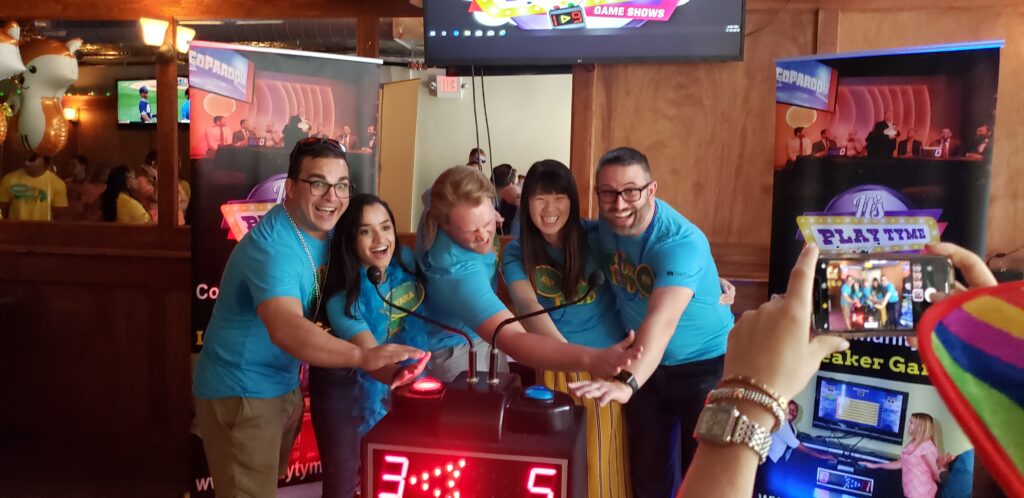
game-shows-nj
Designing Engaging Game Elements
Creative game elements add excitement and a competitive spirit to your retreat. Start by incorporating challenges that encourage problem-solving and teamwork. For example, Jeopardy-style quizzes can test knowledge while fostering collaboration.
Use interactive tools like mystery boxes or timed challenges to keep everyone invested. These elements not only make the session fun but also drive meaningful participation. Tailor the games to reflect your company’s values and objectives for a cohesive experience.
Selecting the Right Game Show Theme for Your Team
Choosing the perfect game show depends on your team’s dynamics and goals. For larger groups, activities like Wheel of Fortune or The Price is Right work well. Smaller teams may benefit from more intimate formats like Win, Lose or Draw.
Consider the skills you want to develop. If communication is a priority, opt for games that encourage dialogue and creativity. For strategic thinking, challenges like Corporate Survivor can be highly effective.
| Game Shows | Team Size | Skills Developed |
|---|---|---|
| 1 – Jeopardy | Small to Medium | Knowledge Sharing, Collaboration |
| 2 – Wheel of Fortune | Large | Strategic Thinking, Team Bonding |
| 3 – Win, Lose or Draw | Small | Creativity, Communication |
| 4 – Corporate Trivia | Medium to Large | Knowledge, Competition and Collaboration |
Balancing rigor and play is key. Ensure the games are enjoyable but also purpose-driven. This approach not only improves morale but also provides valuable insights into team dynamics.
For more ideas on engaging your team, check out this guide to team-building participation.

Staff Engagement Strategy
Enhancing Team Building and Communication
Building stronger connections among team members is a cornerstone of successful retreats. These events provide a unique opportunity to foster collaboration and improve communication in a relaxed setting.
By integrating structured activities, you can create an environment where everyone feels valued and engaged.
Creating Opportunities for Connection
Interactive game shows and team-building exercises are excellent ways to encourage deeper connections.
These activities allow participants to work together, share ideas, and build trust. For example, a Jeopardy-style quiz can test knowledge while promoting teamwork and problem-solving.
Studies show that structured activities during retreats significantly enhance communication and morale. By designing sessions that focus on collaboration, you ensure that every participant has a chance to contribute.
This approach not only strengthens relationships but also boosts overall team performance.
Balancing Strategic Planning with Fun Experiences
A well-balanced agenda is key to a successful retreat. While strategic planning sessions are essential, incorporating fun activities ensures that the event remains engaging.
Activities like timed challenges or creative workshops provide a break from rigorous discussions while still fostering innovation.
According to research, a mix of work and play leads to more focused and resilient teams. By blending serious objectives with enjoyable experiences, you create a retreat that is both productive and memorable.
For more insights on designing effective retreats, explore this guide to leadership retreats.
Leveraging Expert Insights and Real-World Examples
Industry leaders have proven that integrating expert insights into retreats can transform team dynamics. By learning from successful companies and applying their strategies, you can elevate your event to new heights.
This section explores proven tactics and the importance of continuous improvement through feedback.
Proven Tactics from Industry Leaders
Companies like Deloitte, McKinsey, and HubSpot have set benchmarks for successful retreats. Their strategies often include structured feedback loops and expert facilitation.
For example, Deloitte uses real-time feedback to adjust activities, ensuring every participant remains engaged and aligned with the retreat’s goals.
According to the Forbes Coaches Council, involving external consultants can add significant value. These experts bring fresh perspectives and help design activities that foster skill development and team bonding.
This approach ensures your retreat is both impactful and memorable.
Integrating Feedback and Continuous Improvement
Feedback is a cornerstone of any successful retreat. By collecting insights during and after the event, you can refine future activities.
For instance, McKinsey uses post-retreat surveys to identify areas for improvement and measure participant satisfaction.
Here’s a step-by-step guide to integrating feedback effectively:
| Step | Action | Outcome |
|---|---|---|
| 1 | Collect real-time feedback | Immediate adjustments to activities |
| 2 | Analyze post-event surveys | Identify strengths and weaknesses |
| 3 | Implement changes | Enhanced future retreats |
| 4 | Track long-term impact | Sustained team growth |
View each retreat as an opportunity to learn and adapt. By incorporating expert insights and participant feedback, you can create an environment that drives sustained leadership growth.
For more tips on fostering a positive work environment, explore our detailed guide.
Practical Tips for a Successful Off-site Leadership Experience
Planning a successful retreat requires careful attention to both activities and logistics. By focusing on customization and seamless execution, you can create an event that meets your objectives and leaves a lasting impact.
Customizing Games and Activities to Meet Your Objectives
Start by aligning activities with your retreat goals. For example, if improving communication is a priority, design game shows that encourage dialogue.
Use interactive tools like mystery boxes or timed challenges to keep everyone engaged.
Here’s a checklist to help you customize activities:
- Define your retreat goals clearly.
- Choose activities that reflect your company’s values.
- Tailor game elements to foster specific skills like problem-solving or creativity.
- Test activities beforehand to ensure they align with your objectives.
Managing Logistics for a Seamless Event
Logistics play a crucial role in the success of your retreat. From selecting the right venue to coordinating schedules, every detail matters. Here’s how to manage logistics effectively:
First, choose a venue that supports your activities and provides a comfortable environment. Ensure it has the necessary resources, like AV equipment or breakout rooms. Next, create a detailed schedule that balances work and play.
Consider using technology to streamline planning. Tools like event management software can help you track RSVPs, manage schedules, and collect feedback. Professional facilitators can also add value by ensuring smooth transitions between sessions.
| Step | Action | Outcome |
|---|---|---|
| 1 | Select a venue | Supports activities and comfort |
| 2 | Create a schedule | Balances work and play |
| 3 | Use technology | Streamlines planning and execution |
| 4 | Hire facilitators | Ensures smooth transitions |
By balancing creative activity design with solid logistical planning, you can guarantee a successful retreat. For more ideas on customized team-building activities, explore our detailed guide.
Conclusion
Incorporating game shows into your next team event can transform the experience. These activities not only enhance communication but also foster creativity and collaboration.
By setting clear goals and designing engaging games, you create a space where everyone feels involved and motivated.
Balancing strategic planning with fun ensures your event is both productive and enjoyable. Activities like Jeopardy-style quizzes or timed challenges encourage problem-solving and teamwork.
This approach helps your team grow while building stronger connections.
Remember, ongoing reflection and feedback are key to continuous improvement. Use insights from each session to refine future events.
Start planning your next team gathering today to create a memorable and impactful experience.
For more ideas on executive team-building activities, check out this guide to executive team-building games.
